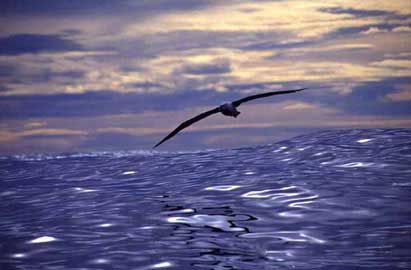New technologies for albatross research

Albatrosa is the largest flying bird. It has a length of 2-3 meters and a weight of 10-12 kilos. But not only for this peculiarity, but also because it uses wind and sea currents to consume less energy during hunting. This time it was analyzed by researchers from the Chizé Centre (CNRS), under the direction of Henri Weimerskirch.
Between January and March 2001, the short flights carried out by these birds in reproductive times were investigated, with a chip of about one hundred grams behind fifteen albatrosses. The chip reported the route of the bird with a frequency of seconds. Thanks to the new technology they have managed to know perfectly the fishing of the albatross.
Thanks to such a high degree of precision, researchers have been able to know the speed of birds, resting on the water at a speed of 0 to 9 km/h. usually between 18 and 135 km/h in flight. Speed depends on the force they perform, the wind speed and the direction.
The research will also serve to better understand the wind and sea currents of the region, as well as to learn more about bird feeding. In fact, being a bird that has no habit of submerging under water, researchers did not understand how squid is eaten. Albatrosa seems to use swirls to move and feed. In fact, foods that emerge through the whirlpools, such as squid, end up at the beak of the bird.
Buletina
Bidali zure helbide elektronikoa eta jaso asteroko buletina zure sarrera-ontzian











